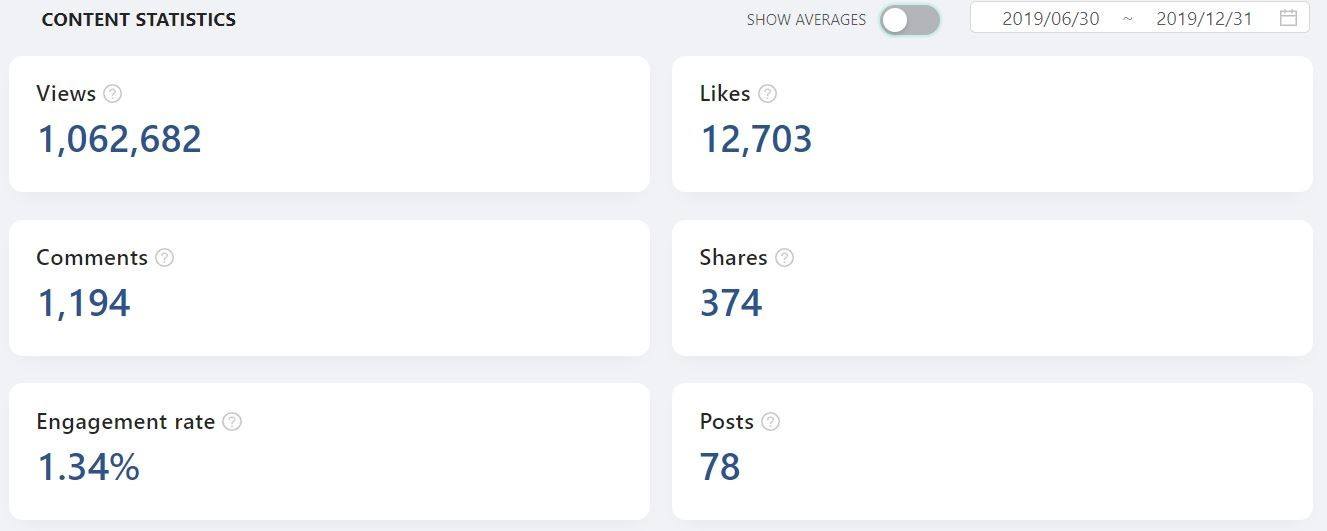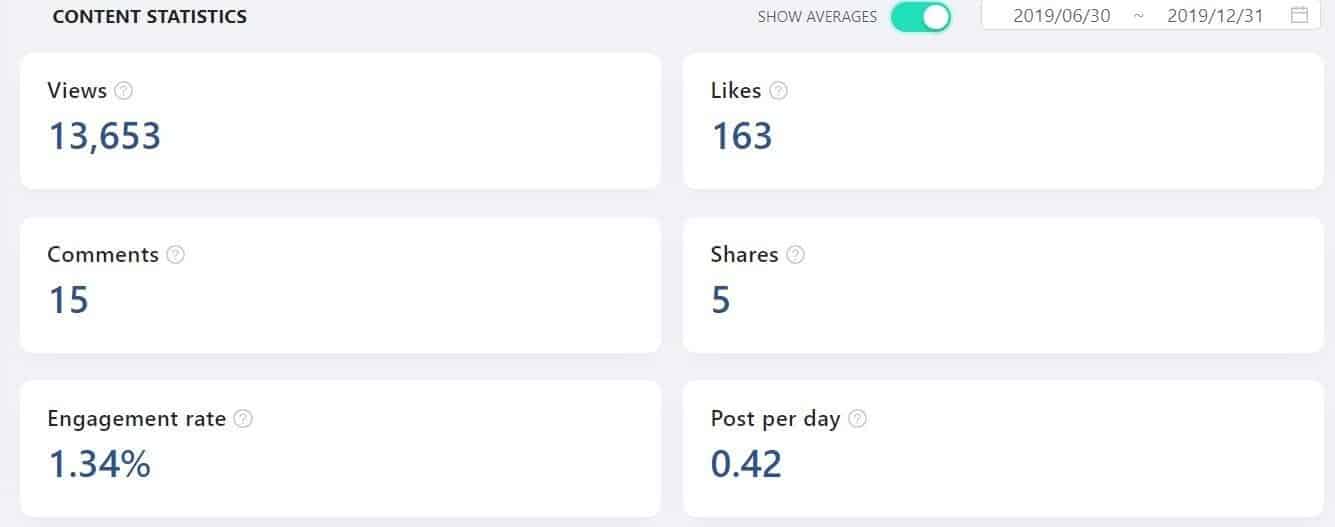An Actuarial LinkedIn Odyssey (to 1 million views in 6 months)
Why would an actuary bother writing on LinkedIn? It’s a fair question given the time investment and hence the opportunity cost. I began using LinkedIn just over two years ago. Witnessing an increasing number of my colleagues and friends using social media for business purposes piqued my interest. However, as a non social media user it all seemed a bit weird to me. Posting thoughts, comments and videos on a computer or smartphone for all the world to see. What the heck was this strange world all about?But I didn’t want to get left behind. So I reluctantly dug in and joined the social media party. Twitter didn’t appeal to me. Too much craziness. So I opted for LinkedIn and setting up this blog on my ProActuary website instead. After 20 months of occasional sporadic posting, in August 2019 I decided to trial LinkedIn properly. I wasn’t sure what value consistent LinkedIn posting would bring, but I felt a 4 month sustained effort would be enough to allow me to make a judgement.
THE CHALLENGE
So in late August 2019, I set myself both a commitment and a fun goal for the rest of 2019.Commitment:Post content, mainly applicable to actuaries, at least once per week for the rest of 2019.This was a ‘process’ goal I had full control over so I took it seriously after committing and posted every Saturday morning whether or not I felt like it.Fun Geek Goal: Achieve >1 million LinkedIn views over the last 6 months of 2019. This was an ‘outcome’ goal I had much less control over, so it was more for fun and to help maintain my interest. My potential reach is quite limited, as there are – I’m guessing – only about 20K actuaries active on LinkedIn (?). Also views don’t necessarily mean anything, on their own, so I wasn’t overly focused on the outcome of this goal.
THE WHY
1) Giving Back
The actuarial profession has treated me well over the last 20 years. Like most actuaries, there’s a part of me that wants to give back. The older I get, the more I realise not everything in business is about money.Many actuaries volunteer or mentor students or give their time in other ways. I felt that writing content on LinkedIn could be one small way I might give a little back. With almost 20 years in the profession, surely I had something meaningful to contribute that might help educate or provoke thought among other actuaries.
2) Personal Goals
Altruistic notions aside, I also had some personal motivations:
i). To drive traffic to my ProActuary blog.
LinkedIn has become an important source of lead generation. I started my own blog website (ProActuary) a couple of years ago. It’s not a revenue generating venture, but I was interested to find out the potential that LinkedIn offered to drive traffic towards it.
ii). To improve my writing skills.
I believe that writing is a very important business skill. Yes, even for number loving actuaries! Good writing promotes clear thinking, enhances communication and increases credibility. It’s a useful skill to develop.I wanted to improve from a technical point of view. To better understand the nuances of passive versus active, split infinitives and adverbs. I also wanted to learn how to use words for marketing purposes. To be able to tap my keyboard and get eyeballs reading the output. Like magic. 21st century sorcery.
iii). To network with others in my professional field (actuaries).
It’s interesting how business networking has changed in recent years, especially with the increasing popularity of LinkedIn. Technology has eroded the barriers to meeting people and allows us to efficiently and quickly build a meaningful network.As we live in a world of relationships, I felt this would be a worthwhile pursuit. A strong network can open up new opportunities and provide you with a resource library to tap into for thoughts, feedback, or advice.
iv). To learn about new topics and clarify my thinking.
Writing, especially when put under public scrutiny, is one of the best ways I know to help clarify thinking. If I write about a topic, especially when I know thousands of people might view it, I will make an extra effort to critically consider my line of thought and question my assumptions. And, of course, when done on a social platform it provides an opportunity to gain valuable insight from the wisdom of the crowds.
v). To challenge my comfort zone.
One of my core beliefs is that we should always be growing. Constantly learning and challenging ourselves. Moving ever closer to Kaizen warrior status.Honestly, putting ‘content’ out there in the public domain can be a little daunting. You are opening yourself to potential ridicule and snide remarks. It’s much easier to not bother. But that’s where the challenge lay. I wanted to force myself to post content. To not care as much about what other people thought. Or at the very least, to still care but to do it anyway.
vi). I enjoy writing.
Numbers are great. But playing with words can also be fun. Writing is a gateway to clear thinking, awareness and discovery.
THE RESULTS
I stuck to my commitment to post on LinkedIn at least once per week. In fact, as the project gained momentum, I ended up posting usually 2-3 times per week. Some of my posts were simply sharing news articles or other people’s posts. Some were well thought out articulations. Some were a 2 minute thought dump during a rushed morning coffee.Most of the time, I enjoyed the content writing process. At other times, I couldn’t be bothered. But I had made a short-term commitment to post, so I did it anyway.LinkedIn became like a conscious streaming of my random thoughts. A place to help me clarify what I was thinking about. If I found myself wondering about the impact of blockchain, data science, wearables, marketing, personal development or general life, the LinkedIn platform provided the outlet. The ensuing comments, from my growing network, also motivated further thought and output. I had truly entered the strange world of social media and started to finally “get it.”
LinkedIn Content Statistics (30th June-31st Dec, 2019)

*Data from Shield Analytics.
As per the screenshot above, I also achieved my goal of >1 million LinkedIn views over the last 6 months of 2019.However, as any LinkedIn pro will tell you, views are a bit of a vanity metric. They don’t reveal whether anyone got any tangible value from the content. The likes, comments and shares are more revealing. I was, therefore, also pleased to see that the content generated a reasonable level of engagement and at times some interesting discussion.
THE BENEFITS
So what tangible benefits has this little fun experiment brought me? Here are 10 benefits I’ve experienced:
1). I’ve met and had conversations with many amazing people across the world, increasing my “connection lifetime value.”
I now have a much wider network to call upon should I need help, advice or a friendly ear for feedback. Opportunities have already arisen directly from people getting in touch with me via my content. For example consulting and research opportunities.On a quantitative level each and every connection has a small probability of also being useful to me at some unknown future point. In my actuarial brain, the discounted sum of all these potential values (over my working lifetime) can almost be thought of as an annuity calculation. A probability contingent connection lifetime present value.
2). It has improved my writing.
I’m slowly learning this valuable art. Not just how to improve my grammar, spelling and writing prose, but also how to create sentences and paragraphs that flow. How to draw a reader in and move them from beginning to end. I’ve found it to be both an art and a science. An activity that will provide a lifetime of learning.
3). The process of LinkedIn content generation has helped me formulate ideas and think things through.
I now know more about things like quantum computing, artificial intelligence, marketing, habit formation, networking and many others things, than I did 6 months ago. All thanks to the power of LinkedIn,I’ve found that writing doesn’t just communicate ideas. It also generates and clarifies them.
4). Getting feedback, opinions and comments on my content has helped me understand things better.
There are so many smart people on the LinkedIn platform to learn things from. It’s a resource I believe nearly every professional should be tapping into.
5). It’s taken me out of my comfort zone.
6). It’s helped improve my marketing skills (figuring out what does/doesn’t work).
7). I quite enjoy the numbers.
Experimenting and geeking out on engagement rates and website traffic generation is actually kinda fun.
8). It’s improved my creativity.
Content generation makes you curious. A curious nature improves creativity. A creative mind helps you connect random dots and see things in a different way.
9). LinkedIn has brought a significant amount of traffic to my ProActuary website (discussed below).
10). Writing content has motivated me to look more closely at life.
Reading and learning about cryptocurrency motivates an article on the impact of blockchain on actuaries. Experimenting with my Oura ring wearable device results in a thought post on wearable usage potential for insurance. A chess match with my son becomes a post on valuable business lessons. A morning spent building a flowerbed becomes a reflection on the consequences of our overuse of technology.
THE DOWNSIDES
1). Time is the biggest cost.
If you want results you have to put in the work. A cardinal rule of life. I probably averaged about 15 to 20 minutes per day on this platform, over the 4 months. Engaging with others and drafting/posting content (posts and articles). The actuary in me tells me this is a significant % of my weekly free time. And time spent on this platform is time not spent with my kids, walking on the beach, cycling, being with friends etc. In other words there is an opportunity cost. Something I take very seriously.
2). Phone checking.
Generally, I try to limit my smartphone use in life. However, I have found LinkedIn posting encourages a habit of constant phone checking. The addictive lure of checking how well a post has performed is quite strong. It sometimes feels like Jeff Weiner & Co have hijacked my brain and are desperately pushing it towards the checking of a screen. My smartphone became like an IV tool providing constant dopamine drips to my hungry nervous system.In 2020 I plan to discipline myself to checking and responding to comments if I’m already online and only within the first hour of a post (for traction reasons – see below) and then only intermittently checking LinkedIn once or at most twice a day after that (e.g., after lunch or at the end of the day).
3). Time spent dealing with/being exposed to “takers.”
I mentioned one of the big benefits being the many great people I have met. Unfortunately I’ve also encountered a few duds. Some have asked me for advice, which I willingly gave, and then never to hear from them again. Some fill my inbox with unreasonable requests. Others want something and can’t be bothered to use appropriate etiquette. They are in the minority and it’s a small point, but still worth mentioning.
4). It’s uncomfortable.
I’m not a social media person. Generally, I prefer anonymity and privacy. Posting on here, even after a sustained period, can sometimes feel a little strange and uncomfortable. I don’t like feeling uncomfortable. In some sense it also feels slightly ego-centric.
5). All my poor grammar, spelling mistakes and cringe-worthy posts are there for my network to see.
THE LESSONS
So what have I learnt from posting regular content on LinkedIn over the last few months?
Writing Lessons
The way to learn to write better is by writing. Strange that! Below are a few things I’ve learnt about writing:
1). For longer content, the efficient approach is to just write.
Get a bad first draft down as quickly as possible, then edit and rewrite. The essence of writing is rewriting. Over and over.
I didn’t have time to write a short letter, so I wrote a long one instead.” – Mark Twain
2). Clean and strip your writing as far as possible.
When your story is ready for rewrite, cut it to the bone. Get rid of every ounce of excess fat. This is going to hurt; revising a story down to the bare essentials is always a little like murdering children, but it must be done.” – Stephen King
Examine every word. Is it really necessary? As many veteran writers advise, you must learn to “kill your darlings.” Like a house you have lived in for a while, the more you clean and tidy, the more you realise just how much unnecessary clutter you have added.
3). Clear thinking brings about clear writing.
4). Break up walls of text.
5). Don’t try to make a single sentence do too much work. Shorter sentences generally work better.
6). Read and emulate good writers.
7). Simple is usually better.
Don’t try to impress the reader with your plethora of imposing words, added for ostentatious reasons like you are an impressive sesquipedalian writer. Less is more.
8). People like stories.
The more specific and the more they can relate, the better. Quite often we make sense of the world by turning what happens into stories. Stories are memorable. They facilitate emotional engagement and help us understand and remember the message. It’s an art worth learning. Yes, even in the serious business world.
9). Writers are part educators, part entertainers, part thought provokers.
Constantly ask yourself, would I invest my limited time to read what I have written?
10). Writing is like going fishing.
First you need a good bait (headline) and hook (opening sentence) to avoid the fish (potential readers) swimming (scrolling) by. Then once the catch (reader) is on the line (you have his/her attention) your job is to reel them in (avoid losing their interest), all the way to the shore (the end of the article/post). One or two sharp tugs on the line (weak sentences) and they are gone (off the hook). Possibly forever (don’t connect/follow). Swimming (scrolling) towards some tastier bait (better reading material).Part of the job of every sentence is, therefore, to induce the reader to the next one. Cajole, excite, entertain or educate them. All the way to the end.
LinkedIn Lessons
1). Above all else seek to add value
Don’t post rubbish. Your reader has invested in you. They’ve given you a small piece of their limited time on planet earth. Be respectful of that and at least try to reward them with an insight or perhaps even a smile. Something of value. Keep the double tapping Xmas tree and photo of the wolf pack away their doorstep (feed). The challenge, however, is that it’s almost impossible to appeal to everyone. It’s true what they say – if you try to please everyone, you end up pleasing no one. So don’t be lukewarm. Instead take a stance and take any collateral damage hits on the chin.
A good acronym to remember, as highlighted by B2B copywriting guru John Espirian, is to put your content through the CHAIR test. Is it Challenging, Helpful, Amusing, Interesting or Relevant.

2). Early engagement matters most.
To improve your chances of succeeding with LinkedIn post generation, you need to get traction in the first hour. Let’s examine this in a little more detail. Firstly, my understanding as to how the LinkedIn algorithm works is as follows:
When you post content on LinkedIn, the platform then tests it by showing it to a small percentage of your network. If the early engagement is high (from my experience, more than 2% of views resulting in a like, comment or share) the algorithm will spread it further among your network.
Hence, it’s helpful to:
- Reply to comments on your content within the first hour of posting.
- Like your own posts, which helps to get initial traction. Side note: Personally I can’t bring myself to do this (it feels a bit desperate – but maybe I just have issues!), but it seems to work for others.
- Tag lots of people. Again I don’t do this (unless there is a very good natural reason).
- Use hashtags (sparingly). 3 maximum.
- Have a well defined niche network so that your content naturally appeals to most of them (improves the chances of the algorithm sharing further, via an enhanced engagement rate). 90% of my connections are actuaries.
3). If you are chasing views, posts provide much better bang for your buck than articles.
In my opinion, it’s unfortunate the LinkedIn algorithm no longer promotes articles as much as posts. Posts are naturally short and often superficial, whereas articles typically provide depth and thoroughness. However, it is what it is and if you are measuring ROI of your efforts via views, then posts are the way to go (or perhaps video, if you are brave enough!).The platform does, however, change over time and posting may eventually become less important.
4). Like all good hosts, LinkedIn prefers to keep the party in their own house.
Don’t post links to external websites in your posts or the algorithm will punish you by restricting who sees it.
5). Quality content, unfortunately, does not correlate perfectly with performance metrics.
Average Post Performance (30th June-31st Dec, 2019)

*Data from Shield Analytics.
I’ve had posts that took very little thought or effort that performed much better than my average figures, shown here. In contrast, some content, that I put a lot of thought and effort into, performed below my average figures. Posts where I have shared articles performed the worst (most likely due to the point I made in #3 above). Some day I must regress perceived value against performance to see what this relationship really looks like.
6). Experiment and iterate your way to success.
Just like in real life, if you fail fast on LinkedIn, you learn fast. The best way to learn is by doing it and not reading about how to do it. Timing of posts, content format and content type provide opportunities to discover what works for you and your network. If getting views on your LinkedIn content is your primary goal then experimenting and iterating, just like a lean start-up, is a good approach to take.
7). LinkedIn rewards consistency.
If you want LinkedIn views, you can increase your chances of success by posting consistently. It’s not just the extra content that generates views, but also the fact the algorithm seems to reward consistent posting.
8). Consider why you are posting.
What is the desired outcome? Are you hoping to raise your individual profile? Give something back? Establish your credibility? Drive traffic to a website? Is it worth the effort and time commitment?Do a cost-benefit analysis and if it’s positive then commit to regular posting and trial it for a few months. Then reevaluate.
9). LinkedIn provides a direct opportunity to increase revenue.
As mentioned above, LinkedIn has driven traffic towards my ProActuary blog website. The blog isn’t designed to provide an income, but if it was, it’s easy to see how a scaled version of my efforts could possibly be financially worthwhile. A couple of good examples of this are provided by LinkedIn posters, Asim Qureshi and James d’Apice.Asim Qureshi: Asim is a prolific LinkedIn poster with 80K LinkedIn followers. He’s a former investment banker, turned entrepreneur as the CEO of a company that owns a location-based attendance app called Jibble.He’s smart, insightful and articulate. He’s also controversial, outspoken and not afraid to self-publicise/promote. Whilst there is certainly a big downside to being controversial and outspoken (e.g. you tend to attract a lot of abuse from trolls, haters and keyboard warriors), I’m guessing Asim is happy to make the trade. He knows that controversy and outspoken opinions generate views and momentum for his content, which results in more awareness and followers etc. He then carefully places occasional content referring to Jibble which likely leads to brand awareness and ultimately revenue. With typically over 1,300 likes per post, I would hazard a guess that his LinkedIn efforts are paying off.James d’Apice: James is a charismatic commercial and litigation lawyer from Sydney. He posts “case note” videos of various legal situations aimed at accountants.His LinkedIn goal: “to generate one substantial piece of commercial litigation that will run to final hearing per year, every year, for 35 years.”
bit by bit, I aim to help accountants understand more about the law as it applies to their clients. I do so generously, without expectation of anything in return.
I hope to contribute to the success of others, even though I might never know about it. That’s the 999 in 1,000.
But the sharp, commercial edge of that “generosity” model is: the more generous I am, and the more value I bring, the closer I get to being considered for that 1 in a 1,000 phone call.
Has James succeeded? Has he got any work from his efforts? You can read his article here.So as you can see, I believe there is potential for LinkedIn to provide a financial ROI for some individuals. If I was a freelancer or self-employed consultant and had a greater reach then I think I could eventually justify the time on this benefit alone.
10). LinkedIn posting is a virtuous cycle.
The more value you give the more you get out of the platform. Cliché, but true (from my experience).
CONCLUDING THOUGHTS
As a non social media user I’ve found posting on LinkedIn to be an interesting learning experience. For sure, it has taken up some of my time and required some “work” but a retrospective cost-benefit analysis has revealed that it has had many personal benefits and has been worth the effort. Furthermore, I have had many comments and messages that make me feel at least a few people have received value from some of my content.I plan to continue posting on LinkedIn for the foreseeable future and I’d encourage other actuaries on the LinkedIn platform to also start posting and see what happens.
*(Disclaimer: affiliate link above)



